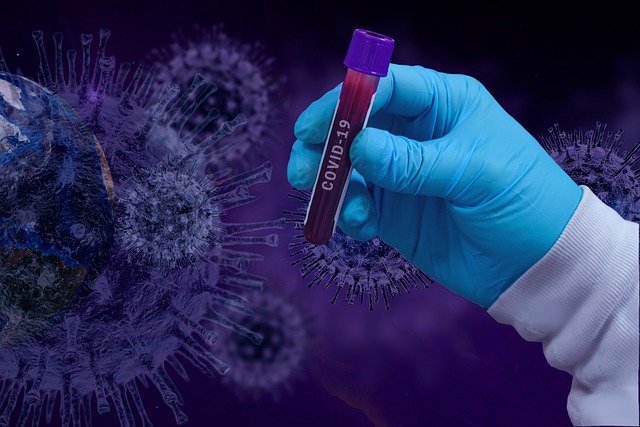In this commentary, the authors discuss whether COVID-19 can lead to new-onset diabetes. They note that COVID-19 infection, like other infections, can cause hyperglycemia in people without known diabetes, and highlight possible mechanisms through which this could occur. Reports on the occurrence of type 1 diabetes due to COVID-19 have been conflicting and the authors conclude that a causal association is unlikely. Data on angiotensin-converting enzyme 2 (ACE2) expression in pancreatic cells have also been conflicting. Furthermore, it is unclear whether beta cells express or can be induced to express the receptor necessary for direct viral injury and beta cell destruction. Beyond ACE2 expression and direct beta cell effects, the authors discuss other mechanisms that could result in new onset diabetes in the context of COVID-19. The available data on the effects of COVID-19 on the development of new-onset diabetes are conflicting and more studies are needed. |
In the early weeks of the COVID-19 pandemic, reports emerged pointing to the deleterious impact of diabetes on people infected with SARS-CoV-2. Over time, obesity, hyperglycemia, type 2 diabetes, and type 1 diabetes have been reported to be associated with increased COVID-19 morbidity and mortality, as well as increased therapeutic need during hospital admission. .
More controversial, however, has been the question of whether SARS-CoV-2 specifically, itself, is capable of inducing diabetes; and, if so, in which of its forms. Beyond this question, hypotheses abound as to whether such disease-causing activity (if it exists) is due to the acceleration of an underlying and potentially pathogenic characteristic associated with the pathogenesis of traditional diabetes (i.e., type 1 or type 2 diabetes ), or the incitement of a new variant of diabetes involving acute β-cell destruction or impairment of insulin secretion.
What does seem clear is that SARS-CoV-2 infection, like many other infections, has the capacity to induce hyperglycemia in people without a prior diagnosis of diabetes, either through decreased secretion of insulin, increased release of counterregulatory hormones, excess hepatic glucose production, impaired glucose elimination, or a combination of these factors.
The onset of diabetes has, in case reports, been observed to occur simultaneously with acute SARS-CoV-2 infection or in the weeks or months following recovery from infection. However, findings from epidemiological studies have been contradictory: for example, work from the United Kingdom showed an increase in the incidence of type 1 diabetes during the COVID-19 pandemic, while a larger study from Germany showed no such change, although none of the studies confirmed the diagnosis of COVID-19 or considered viral load as a potential contributing factor.
Recent summaries of the available scientific literature suggest that a causal association between COVID-19 and the onset of type 1 diabetes is unlikely, but more research is needed. Indeed, taken together, the available information provides a solid foundation for the newly formed CoviDiab Registry, which seeks to proactively address such questions.
Importantly, there is no consensus on which pancreatic cells, and in particular whether insulin-producing β cells, express the key viral receptor for SARS-CoV-2, angiotensin-converting enzyme 2 (ACE2) and factors or cofactors. additional (e.g., TMPRSS2, TMPRSS4, NRP-1, CD209L, and SR-B1) required for efficient entry of SARS-CoV-2.
More than 150 human cell types reportedly express ACE2, with expression levels affected by several factors, including age, sex, comorbidities, medications, inflammation, and components of the renin-angiotensin system.
As with epidemiological evidence, reported data regarding ACE2 expression in pancreatic cells are contradictory. Studies of both isolated human islets and β-cells derived from induced pluripotent stem cells (iPSCs) suggest ACE2 expression in a limited subset of β-cells or their insulin-producing surrogates, respectively. It is unknown whether isolated islets or iPSC-derived endocrine cells accurately mimic infectivity in vivo .
In contrast, analyzes of human pancreatic tissues from dozens of organ donors by immunohistochemistry did not identify ACE2 expression in endocrine cells (including β cells), but instead showed clear ACE2 expression by ductal structures and microvasculature. within the islet and acinar regions of the pancreas. Coexpression of ACE2 and required cofactors such as TMPRSS2 was also rarely observed in these tissues (as assessed by transcriptional profiling and immunostaining), reducing the likelihood that SARS-CoV-2 can infect islet endocrine cells in alive.
Immunofluorescence staining of a small number of autopsy pancreas identified colocalization of ACE2 and C-peptide within islets, but the highest expression of ACE2 was within the islet microvasculature). The very small number of studies examining autopsy samples of the pancreas from patients who died from complications associated with COVID-19 have not, so far, provided clear answers. Such studies are key to addressing the question of whether ACE2 or other entry factors could be induced in β cells or other cells within the pancreas as part of the tissue inflammation associated with SARS-CoV-2 infection. Although ACE2 and TMPRSS2 appear to be expressed in pancreatic ductal cells, histological evidence or clinical reports of pancreatitis have not been frequently reported.
Finally, we would expect ACE2 expression in β cells to be a key feature necessary for the virus to inflict its targeted loss and promote diabetes development directly, an observation not reported to date.
















